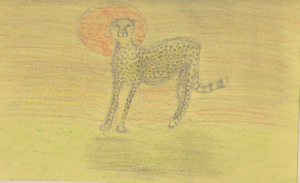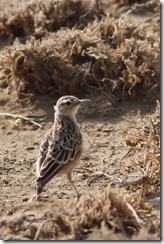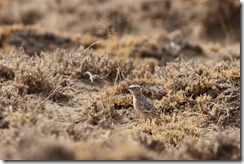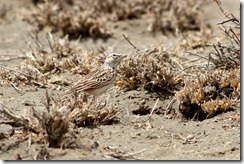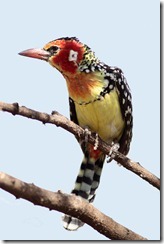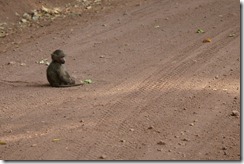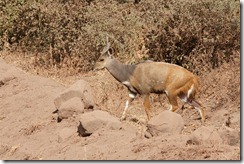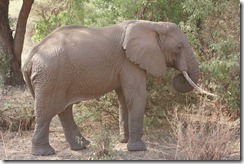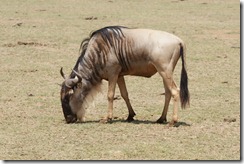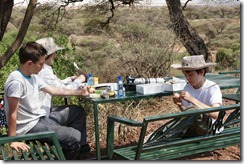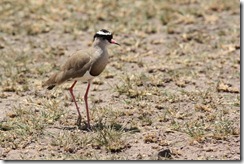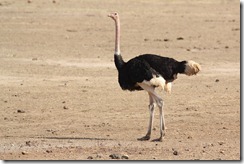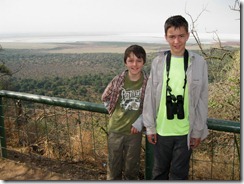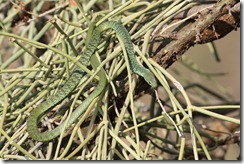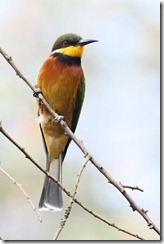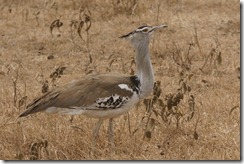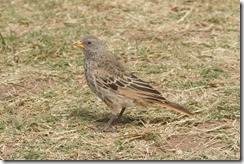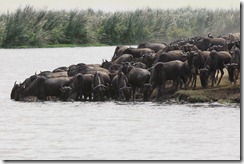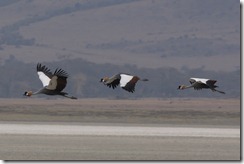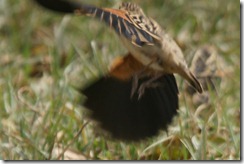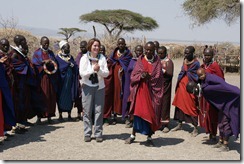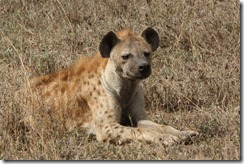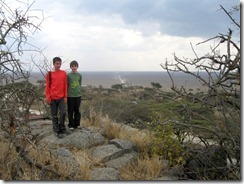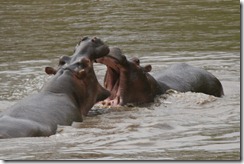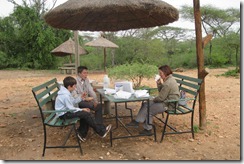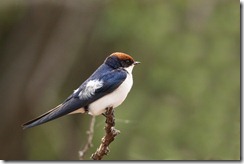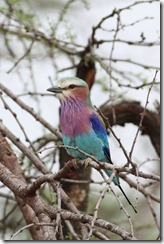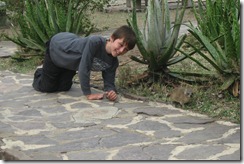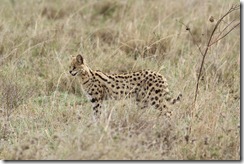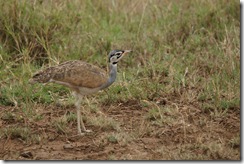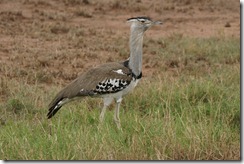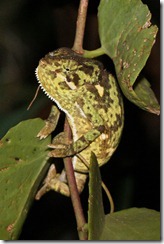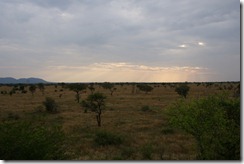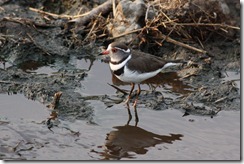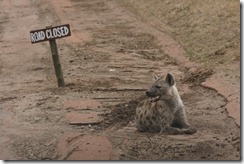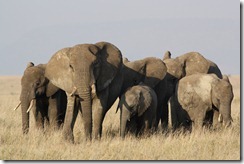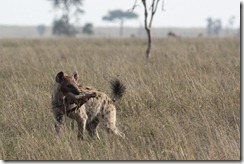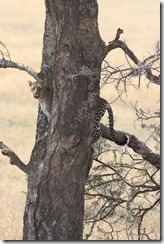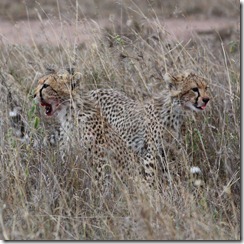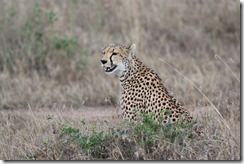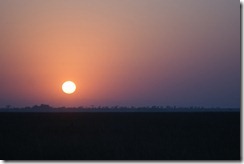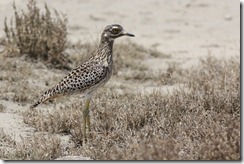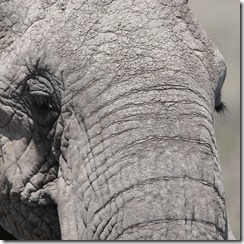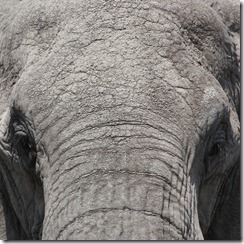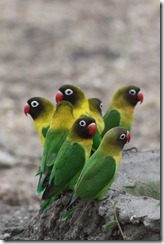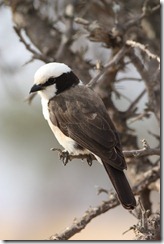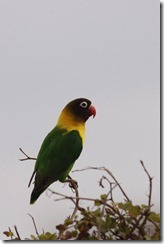Waking early, I explored the small hotel gardens with Tom and Sam. First bird found by Tom was a Grey-headed Sparrow around a well stocked bird feeder. The gardens also held Tropical Boubou, Speckled Pigeon, Common Bulbul, the first of many Baglafecht Weavers, and, surprising for a garden, African Firefinches. A distant perched raptor proved to be Lanner Falcon.
We took a walk outside and watched the young kids go to school, and added Black Kite, Superb Starling, and Pied Crow to the list. I was also fortunate to see my first tick, when a flock of about thirty Mottled Swifts went over.
After breakfast we had a brief meeting with Anthony from Birding and Beyond who was leading a group of American Ornithologists who were staying at the same place and who had arrived on an earlier flight than ours. He passed on to me a few sites, and gave us all company hats to wear, whilst I settled our bill with him.
 We then had a whole load of trouble after breakfast as I’d somehow managed to lock our room with the key to the children’s room! It took about 30 minutes to get in, so we were a bit late getting away to Arusha National Park. Eventually arriving at the gates (adding just Cape Crow on the way), we got out for a brief walk. Here we had Variable Sunbird, an unidentified (but photographed Sunbird), Lesser Striped-Swallow, Wire-tailed Swallow, Red-rumped Swallow, Black Sawwing, African Green Pigeon, and Cape Robin-Chat.
We then had a whole load of trouble after breakfast as I’d somehow managed to lock our room with the key to the children’s room! It took about 30 minutes to get in, so we were a bit late getting away to Arusha National Park. Eventually arriving at the gates (adding just Cape Crow on the way), we got out for a brief walk. Here we had Variable Sunbird, an unidentified (but photographed Sunbird), Lesser Striped-Swallow, Wire-tailed Swallow, Red-rumped Swallow, Black Sawwing, African Green Pigeon, and Cape Robin-Chat.

Then into the park, with the first stop being at Little Serengeti where the family enjoyed there first large mammals: Zebra, Giraffe, Warthog, Buffalo, Waterbuck, and Bushbuck.





Continuing on our way, we found our first Little Bee-eaters, and tried to get to grips with our first Cisticola that turned out to be Singing Cisticola. Several out of plumage Weavers were seen and a Moustached Grass-Warbler; Silvery-cheeked Hornbills flew overhead.


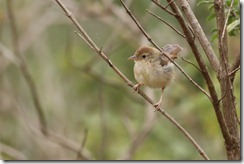
Entering the forest, we stumbled upon Olive Baboons, Sykes’s Monkeys, and then these Colobus Monkeys which I managed a few snapshots of through the trees…

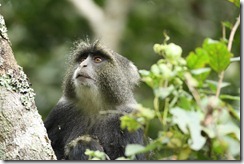
And that set the tone for the rest of the day. Just driving around seeing what we could see. We didn’t really target anything apart from Hartlaub's Turaco which I was told could be found at the viewpoint, and with some patience a pair were eventually called in.

Whilst at the viewpoint we also found this squirrel that needs researching…

…and had our first team photo…

We then had our picnic lunch outside the museum which housed a collection of rather faded mounted birds. Not a lot of live birds could be found here and it was now getting very hot.

 After lunch we continued driving around the forest before leaving to a more sparsely vegetated area around the lakes. Highlights here were two White-backed Ducks, a species I’ve missed on all previous African trips and White-eared Barbet. The largest lake held tens of thousands of Greater Flamingo and Lesser Flamingo, a line of which stretched for the best part of a mile.
After lunch we continued driving around the forest before leaving to a more sparsely vegetated area around the lakes. Highlights here were two White-backed Ducks, a species I’ve missed on all previous African trips and White-eared Barbet. The largest lake held tens of thousands of Greater Flamingo and Lesser Flamingo, a line of which stretched for the best part of a mile.
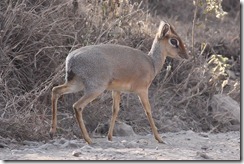 Banded Mongoose, Kirk’s Dik-dik, and Bush Duiker were added to the mammals list as well as well as many more encounters with what had been seen earlier. Birds continued and included six species of raptor, Marabou Stork, Fulvous Whistling-Duck, Palm-nut Vulture, African Yellow Warbler, White-eyed Slaty-Flycatcher, Black-backed Puffback, Brown-crowned Tchagra, and Black-and-white Mannikin. We also struggled for a while with our first Lark, which turned out to be Rufous-naped Lark.
Banded Mongoose, Kirk’s Dik-dik, and Bush Duiker were added to the mammals list as well as well as many more encounters with what had been seen earlier. Birds continued and included six species of raptor, Marabou Stork, Fulvous Whistling-Duck, Palm-nut Vulture, African Yellow Warbler, White-eyed Slaty-Flycatcher, Black-backed Puffback, Brown-crowned Tchagra, and Black-and-white Mannikin. We also struggled for a while with our first Lark, which turned out to be Rufous-naped Lark.

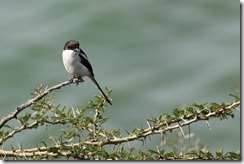
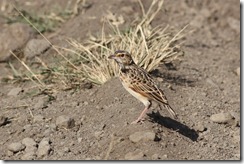
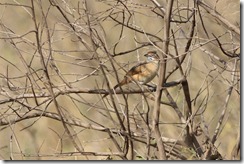
With a final visit to the Small Serengeti, we left at 6pm as the gates were closing. A magnificent first day!
The safari was over, but Sam had undertaken a project at his primary school to raise money for the children of the Cicerly Peace Matunda school and orphanage on the slopes of Mount Meru. Though late, Abdul agreed to take us as we had a bag full of gifts for them (mainly games the children had grown out of). We tried to down-play our visit, as it was getting late and we didn’t want to make a big thing of it anyway, but upon arrival it was insisted that we were given a tour of the school by the very proud caretaker. Though the gifts were small, the children’s faces lit-up when we gave them to them. It was a moving experience for us all and a great way to end the day.

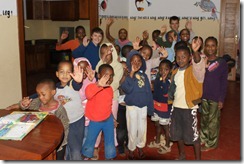
Now dark, we drove through Arusha to the Outpost Lodge where we enjoyed drinks and kebabs before crashing out exhausted.
Other birds noted throughout the day not included above:
Little Grebe
Long-tailed Cormorant
Black-headed Heron
Black-crowned Night-Heron
Sacred Ibis
Glossy Ibis
Egyptian Goose
Spur-winged Goose
Cape Teal
Southern Pochard
Maccoa Duck
African Fish-Eagle
African Cuckoo-hawk? – looked good for this species
African Harrier-Hawk
Eastern Chanting-Goshawk
Gabar Goshawk
Augur Buzzard
African Hawk-Eagle
Common Moorhen
Red-knobbed Coot
African Jacana
Black-winged Stilt
Blacksmith Plover
Common Sandpiper
Gull-billed Tern
Rock Dove
Dusky Turtle-Dove
Red-eyed Dove
Ring-necked Dove
White-browed Coucal
African Swift
Speckled Mousebird
Plain Martin
Rock Martin
African Pied Wagtail
Tawny-flanked Prinia
Yellow-breasted Apalis
Zitting Cisticola
Red-faced Crombec
African Dusky Flycatcher
Red-backed Scrub-Robin
African Stonechat
Malachite Sunbird
Common Fiscal
Fork-tailed Drongo
Red-winged Starling
Red-billed Oxpecker
Yellow Bishop
Yellow-fronted Canary
House Sparrow
Edit (06/09/2011): The Sunbird was Tacazze Sunbird.
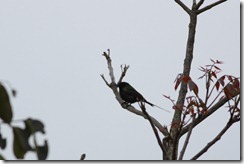
Edit (16/11/2011): The Squirrel is Ochre Bush-Squirrel.
